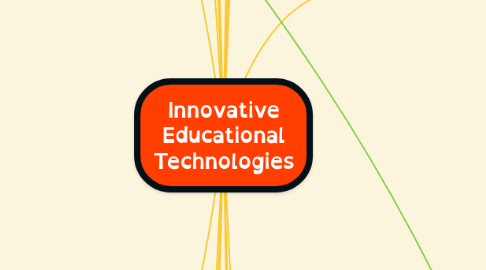
1. Critical thinking + Creative thinking = Problem solving
2. Mindset
2.1. Fixed
2.2. Growth
2.3. Opinion
2.4. Assumption
2.5. Knowledge
2.6. Emotions
3. Heuristic technique
3.1. Curriculum progress
3.2. Challenging students
3.3. Integrating courses
4. Inquiry-based learning
4.1. Structured Inquiry
4.1.1. Starts with a question posed by the teacher.The teacher is there to guide them through every step, but learners are encouraged to analyze and evaluate the information they collect.
4.2. Guided Inquiry
4.2.1. The teacher provides the initial question and learners decide how to approach it. Having designed their own method of inquiry, with the guidance of the teacher, students will collect, analyze and present their results.
4.3. Open inquiry
4.3.1. Learners are fully responsible for the direction of their research, from defining the questions to analyzing and communicating the results. As complex as this may sound, with the right preparation and support, there’s no reason why primary learners can’t get involved in open inquiry.
5. COIL
5.1. Develop relationships with people in another nation
5.2. Share humaneness
5.3. Function effectively
5.4. Technology support
5.5. Senior leadership buy-in and
5.6. Logistics
6. BYOD (bring your own device)📱💻
6.1. MALL📱
6.1.1. .
6.1.2. identifying gaps in knowledge
6.1.3. developing a habit of reflection on language learned
6.1.4. learning to notice (how language is used, how I use the
6.1.5. language)
6.1.6. using language for real purposes in real world contexts
6.1.7. connecting language users (more expert and less expert)
6.1.8. rehearsing, experimenting
6.1.9. developing ability to respond to a context
6.1.10. developing multiple perspectives
6.1.11. learning to learn, developing autonomy
6.1.12. developing digital (mobile) literacies.
6.2. MALL Advantages 👍
6.2.1. Exposure to the target language
6.2.2. Increased engagement
6.2.3. Various vocabulary learning strategies
6.2.4. Different games exercise different skills and result in different effects
6.3. MALL Disadvantages 👎
6.3.1. Low efficiency of studies
6.3.2. A lack of studies on this topic
6.3.3. Not all games are useful for language learning
6.3.4. A lack of game-based learning pedagogy for teachers
7. Artificial Intelligence
7.1. Artificial Narrow Intelligence
7.1.1. Specializes in one area and solving only one problem
7.2. Artificial General Intelligence
7.2.1. Refers to a computer that is as smart as a human across the board
7.3. Artificial Super Intelligence
7.3.1. An intellect that is much smarter than the best human brains in practically every field
8. Artificial Intelligence Technologies
8.1. Natural language generation
8.2. Natural language understanding
8.3. Speech recognition
8.4. Machine learning
8.5. Virtual agents
8.6. Experts Systems
8.7. Decision management
8.8. Deep learning
8.9. Robotic process automation
8.10. Text analytics
9. Virtual Reality
9.1. Increase student engagement to improving memory recall of factual information
9.2. support students with learning disabilities.
9.3. can immerse a user in computer- simulated environments in which they can interact.
9.4. acquire cognitive skills related to remembering and understanding facts
9.5. understanding spatial and visual information and affective skills relating to controlling one’s emotions and responses to stressful situations
10. Learner is self-directed learning via nodes (content source, people, groups) within network
11. Ages evolution
11.1. 20th century
11.1.1. • content • assessment
11.2. 21st century
11.2.1. • 21st assessment • life skills • 21st century content • core subject • learning thinking skills • ICT literacy
11.2.2. 4C:
11.2.3. o Critical Thinker (solving problems) o Communicator( understanding and communicating ideas) o Collaborator ( working with others ) o Creator ( producing high quality work)
11.2.4. Confirmation inquiry
11.2.4.1. The teacher develops a question based on a topic or theme that has already been covered in a previous class.Rather than discover something new, the main aim is to confirm and deepen prior knowledge.
12. Teaching approach
12.1. Project-based learning
12.1.1. 1. Challenging problem or question 2. Sustained inquiry 3. Authenticity 4. Student Voice and Choice 5. Reflection 6. Critique and Revision 7. Public Showcase
13. 4 Pedagogical Theories
13.1. Cognitivism
13.1.1. how information is received, organized, stored and retrieved by the mind
13.1.1.1. • Visual learning • Auditory learning • Digital learning
13.1.1.2. Stimuli - responce - stimuli
13.2. Behaviorism
13.3. Constructivism
13.3.1. klowlwdge is constructed by learners as they attempt to make sence of their experiences
13.3.1.1. learning rather than teaching
13.4. Connectivism
14. Education differences
14.1. Assssment
14.1.1. 20th - Summative
14.1.2. 21st - Formative
14.1.3. Centricity
14.1.3.1. 20th - Teacher centered
14.1.3.2. 21st - Student centered
14.2. Technology use
14.2.1. 20th - Literacy (learning about technology/ learning with technologies)
14.2.2. 21st - Transformative ( learning through technology)
14.3. Teaching methodologies
14.3.1. 20th - Lecture,Stand & Deliver
14.3.2. Project & Problem based learning
14.4. Learning styles
14.4.1. 20th - Read, Write & Auditory
14.4.2. 21st - Visual, Auditory, Kinesthetic & Read, Write
15. The Team Roles Model by Dr. Raymond Meredith Belbin
15.1. Action-oriented roles
15.1.1. The completer / finisher
15.1.2. The Implementer
15.1.3. The Monitor/Evaluator
15.2. Social roles
15.2.1. The specialist
15.2.2. The coordinator
15.2.3. Teamworker
15.3. Intellectual roles
15.3.1. Resource Investigator
15.3.2. The shaper
15.3.3. The plant
